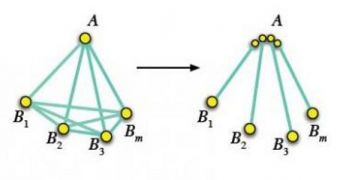Quantum computers are one of the most promising and hard-to-reach goals in the world today. These machines promise unprecedented calculation power, that would make today's supercomputers look like mere pocket calculators. But achieving stable quantum operations is tremendously difficult, and groups around the world are hitting their heads against the wall trying to figure this thing out. The same is the case with quantum communications, where data is handled on similarly-unstable structures.
Now, two researchers at the University of Potsdam believe that they may have discovered a way of weeding out unwanted knots that form in this type of communications. The thing that makes this endeavor incredibly difficult is the fact that quantum states are very hard to achieve and maintain. The goal is to produce structures that can code information in three or more states at the same time, which would roughly translate into rows of “1s”, “0s” and “1s and 0s” flowing at the same time on a single quantum state carrier (for example a photon or group of photons).
What the two researchers did was to produce a theoretical mathematical model that shows how knots in quantum communications can be “combed out”, while at the same time maintaining the integrity of the data being carried from one end of the line to the other. Details of the amazing achievement appear in the current issue of the respected scientific journal Physical Review Letters and are also highlighted with a Viewpoint in the journal Physics. The masterminds behind the accomplishment are scientists Dong Yang and Jens Eisert.
The two explain that entangled particles act like a single unit, even though the individual components may be in different galaxies. Information is coded on these particles, resulting in a quantum bit or qubit. A collection of qubits is entangled in an orderly fashion, resulting in an entangled bit or ebit. The ebits are capable of incredible things, such as coding data beyond supercomputers' ability to break it or teleporting information between two solar systems or galaxies. However, particles that are poorly entangled can cause the data they carry to be scrambled beyond recognition.
The new model allows researchers to delicately comb out a snarl of entanglements, so that the information stored on the qubits is preserved and passed on to its destination. The process helps maintain the stability of the entire structure, thus ensuring an even data flow. In their search to boost quantum communications, the experts may have developed the primitive roots for a quantum World Wide Web.

 14 DAY TRIAL //
14 DAY TRIAL //